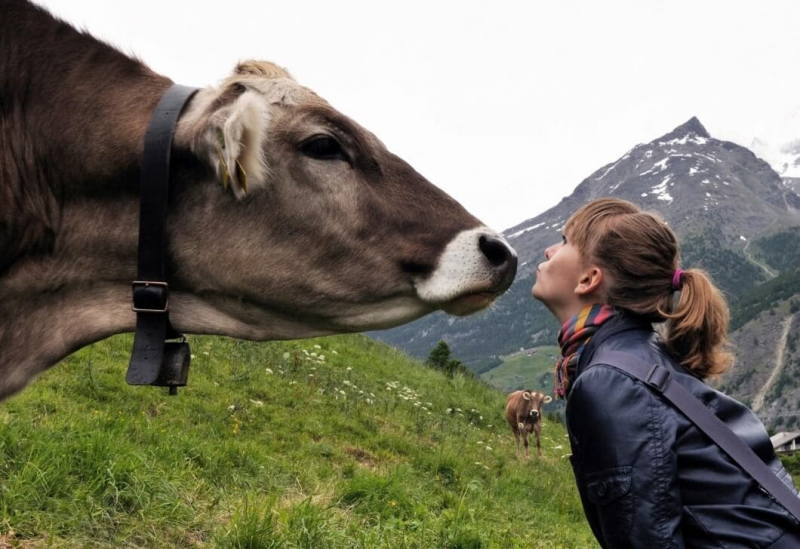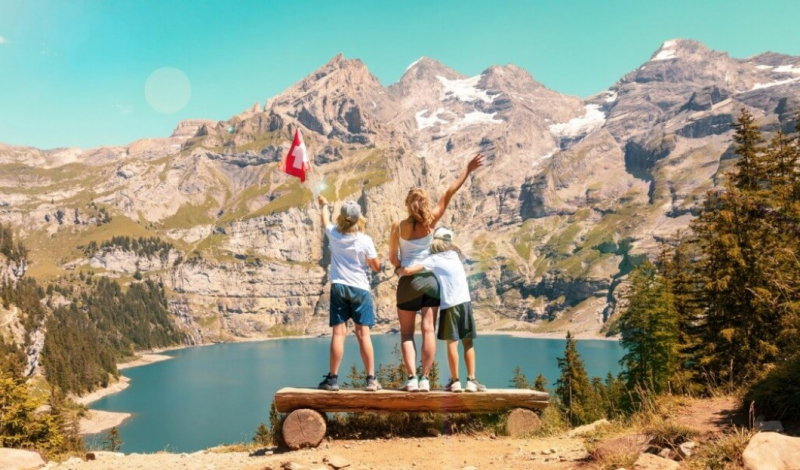Switzerland, a land celebrated for its snow-dusted Alps, clear lakes, and almost obsessive efficiency, has always drawn visitors from across the globe. The Swiss hotel scene truly outdid itself in 2024, recording a whopping 42.8 million overnight stays. This didn’t just beat expectations; it surpassed the pre-pandemic high of 39.6 million from 2019.
It’s a real comeback story, blending strong local tourism with a surge of international guests. And with 2025 on the horizon, the tourism picture is getting even more interesting, with the enduring popularity among Swiss residents and the sometimes unpredictable patterns of global travelers.
From Pandemic Lockdown to Unprecedented Boom
The COVID-19 pandemic really shook things up for Swiss tourism, practically stopping international travel in its tracks and forcing a shift towards domestic visitors. With borders closed, local travel took off. Swiss residents accounted for just under half of all overnight stays in 2024—a trend that started in 2021 and doesn’t seem to be slowing down. Hotels welcomed nearly 21 million stays from locals that year, making them a core part of the industry, especially during the winter ski season.
Interestingly, this isn’t the first time that global events have boosted local tourism. History has a way of repeating itself. During World War II, the number of international visitors dropped dramatically. In 1941, over 80% of visitors were the Swiss themselves. After the war, there was an influx of international tourists, hitting a high of 62% of all visitors by 1970. For years after that, overnight stays stayed fairly consistent, between 32 and 37 million. It wasn’t really until the late 2010s that things started picking up again, eventually leading to 2024’s record.
Looking forward, 2025 might be even better. Just the first half of the year saw overnight stays increase by about 1.8% compared to the same period in 2024, thanks to big events like the Eurovision Song Contest in Basel in May and the Women’s European Football Championship in June. These events not only brought in crowds but also showed Switzerland as a vibrant, accessible place in Europe.
The Elusive Return of Chinese Tourists
However, there is one slightly concerning aspect to this recovery: the noticeable decrease in Chinese tourists, who were once a significant part of the industry. In 2019, which was even called “the year of the Chinese tourist” by the Tages-Anzeiger, Switzerland had over one million visitors from China, who booked 1.3 million hotel nights. One example was a “Chinese wave” of 12,000 Jeunesse Global employees, transported by 95 buses for a sales event. These types of groups, while not always popular with locals, brought in important revenue through advance bookings and generous spending.
The pandemic greatly reduced these numbers, and the recovery has been sluggish. By 2024, arrivals from China had stabilized at 485,546, with 725,129 overnight stays—much lower than before the pandemic. Places like the Jungfrau Railways still feel the loss. Experts point to a few reasons for this: the Chinese middle class, affected by the post-pandemic economy, has lower consumer confidence. Also, China’s encouragement of domestic tourism is redirecting travel. And changing preferences are adding to the complexity—with a shift from large tour groups to individual or small-group travel, where tourists spend more time in fewer places, as a tourism expert noted.
Click here to preview your posts with PRO themes ››

As the Zuger Zeitung points out, predictability is a thing of the past: “Sometimes they come in huge numbers, then only a handful of them stay overnight.” Whether this important market bounces back is still unknown, highlighting how unpredictable tourism can be these days.
The American Rise and Emerging Long-Haul Markets
While Chinese tourism is slow, American visitors are certainly making up for it. Since the pandemic, U.S. overnight stays have been climbing each year: a 26% jump in 2023, followed by almost 3.5 million nights in summer 2024—that’s 300,000 more than the previous year. Easy direct flights, the appeal of the Paris Olympics, and effective marketing by Switzerland Tourism have made the country a must-see for transatlantic travelers.
Also, India’s rise is quite remarkable. Hotel stays by Indian visitors reached 378,751 in the first six months of 2025, marking a 10% increase over 2024—a testament to South Asia’s expanding middle class.
Then we have the influence of pop culture, particularly on Asia’s interest in Switzerland. South Korean tourists recorded around 400,000 overnight stays in 2024, with Grindelwald becoming particularly popular. Following the pandemic, Korean overnight stays there jumped significantly from 55,971 in 2019 to 91,131 in 2023, before decreasing somewhat to 79,309 in 2024. What caused this? The popular K-drama Crash Landing on You, of course, especially that memorable piano scene at Iseltwald’s Lake Brienz jetty, which has inspired fans to visit the Bernese Oberland. The village has even started charging admission to handle the crowds. The show’s popularity in Southeast Asia also has impacts, increasing visitor numbers from Malaysia and Indonesia beyond what they were before 2019.

Neighbors Next Door: The Steady Pulse of Proximity
Amidst the global excitement, Swiss tourism benefits from consistent demand from nearby countries. In many areas, neighboring countries are the primary source of visitors: Germans and French tend to visit regions where their languages are spoken for mountain vacations. Italian visitors are most common in border towns within Graubünden and Ticino, while British tourists often seek out powder in Valais areas such as Verbier and Champéry. Dutch travelers often stop in places like Gurtnellen in Uri or Faido in Ticino while traveling south.
While popular locations like Grindelwald, Lucerne, and Zermatt now see primarily American tourists, smaller, less-known villages have different demographics. In Lungern in Schwyz and Obwalden, Chinese guests are the most frequent; further away, Sursee in Lucerne and Affoltern am Albis in Zurich cater to group stays, maintaining Chinese tourism in less obvious ways.


